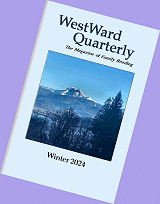Rhythm and Rhyme
Is there a reason for rhythm and rhyme? In his book The Pursuit of Poetry (McGraw-Hill Book Company, 1960), Robert Hillyer states:
Music, dancing, and poetry are the oldest of the arts and came into being before the dawn of history, moving to the recurrent rhythms of Nature itself. They are the unbroken thread between us and the past. A poet, according to the Greek root of the word, is a maker. Verse means a turning, and since the turn must come full circle on itself, we speak of it as a repeating, or recurrent, rhythm, just as in music. Prose rhythm is non-recurrent; hence verse is more natural because it is closer to the rhythms of the universe — and note that universe means a concerted turning. We walk, we breathe, our hearts beat in recurrence; the sun and moon, the stars in their course, the changing seasons — all these are recurrent; we are metrical creatures in a metrical universe.
So in the reading of metrical poetry the reader responds with his own memories and imagination stimulated by the rhythm and phrasing expressed by the poet. A good poem can be read again and again with fresh insight each time. The Greek philosopher Heraclitus observed, “One cannot step twice into the same river.” The water has changed, we have changed, the seasons have changed. With each new reading life has flowed past us and we are different people. I remember a poem I read in grade school that made a deep impression upon me. I can remember the time and place and the emotions that I felt. When I read that poem again, I relive that experience enhanced by the knowledge gained since then which makes it all the more meaningful.
A poem can have rhythm — the ordered recurrent alternation of strong and weak elements in the flow of sound and silence in speech. It can have assonance — resemblance of sound in words or syllables, a repetition of vowels without repetition of consonants (as in stony and holy) used as an alternative to rhyme in verse without a formal structure of rhythm.
Free verse can be good only to the extent that it uses its freedom to express the music that is the heart of poetry. Maybe the fact that it is free makes it actually harder to pull off than when working within the framework of structure. Whatever form we use, the real question is: What am I trying to say and how will it speak to the reader?
I have written both kinds of poetry and enjoy a good poem in whatever form it is written. Consider Emily Dickinson’s short poem:
To pile like Thunder to its close,
Then crumble grand away,
While everything created hid —
This would be Poetry.
It does not rhyme or have any assonance, yet it packs a lot of punch in its few short lines. By the way, I would highly recommend The Pursuit of Poetry to anyone who would like a better understanding of the subject.
Happy Writing!
The Editor
©2004 Laudemont Press


